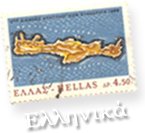The Museum 'LYCHNOSTATIS' is an autonomous private Foundation, operating since June 1992.

The museum has its origins in a private collection formed over a period of thirty years by Yiorgos Markakis , professor of opthalmology, lecturer and writer.
The vast work of construction was carried out in seven years (1986 - 1992) by all 5 members of the Markakis family and 3 local workers , in a volunteer basis , together with a bank loan. The buildings themselves are some of the main exhibits. Built thoroughly with the prevalent raw materials (stone-wood-clay), under the creative architectural improvising of the founder, they possess an aesthetic quality unique in the area. No bulldozers, excavators or other mechanical means have been used in the construction. The collections are broad in scope, from agricultural implements to embroideries and from herbs to rhymes. The approach is by no means intellectual; all exhibits are left to speak for themselves, and visitors are allowed occasionally to touch objects and encouraged to smell and taste the various plants, fruits and products of the museum. Compatible to this both emotional and hospitable atmosphere, it is the museum's policy to welcome with a free admission all visitors who come for a second visit. Audio-guided tours are available in English, French and Russian (also tours are available in Deutsch and Dutch, on request) to provide accurate information to the large number of tourists who visit the museum.
The maintainance and running cost is met by the operation of the museum (admission fees, cafe and shop sales), along with donations, memberships and subscriptions in the Association of Members of the Museum. The museum holds regular activities, such as Greek dancing performances, theater shows and concerts, grape-feasts, wine-tasting, Cretan cooking workshops and several others.
The Cretan Open-air Museum 'LYCHNOSTATIS ' aims to promote the understanding and awareness of the Cretan folk cultural heritage. Its collections relate to the following themes :
- Cretan Folk Tradition and Ethnology
[ life-style in the pre-industrial Crete ( 19th - 20th century ), traditional occupations and customs , living legends , ethnological information e.t.c. ] - Cretan Nature and Environment
[ vegetation (herbs, fruit-trees, cactis) , mineral wealth and environmental administrative process ] - Cretan Folk Culture
[ self - taught artists who promote the folk cultural heritage with their artistic work ]
Located in one of the principal tourist areas in Crete, the museum is, apart from a valuable tourist asset, an exemplary self - motivated conduct on tradition, culture and environment of the island.
The museum comprises the following buildings and locations :
- Traditional Dwellings ( a farmer's house and a middle-class house ),
- Chapel,
- Windmill,
- Olive oil - press,
- Wine-press,
- Distillery for 'tsikoudia' ( alcoholic beverage 'raki' ),
- Threshing-floor,
- Shepherd's shelter,
- Ceramic workshop,
- Weaving and plant-dying workshop,
- Bee's and wax workshop,
- Shoe-making workshop,
- Carpentry,
- Herbarium,
- Garden with Cretan fruit - trees,
- Herb - garden,
- Flora and cactus-garden,
- Mineral and stone exhibition,
- Cretan folk artists' gallery,
- Auditorium [100 seats] for audio-visual shows , seminars , e.t.c.,
- Open-air theatre [250 seats] for cultural and artistic events,
- Temporary exhibitions' hall,
- Library stocked with books and periodicals on Cretan folk culture,
- Cafe (where typical beverages and sweets are served),
- Museum-shop (where home-made products of
M U S E U M V i r t u a l - t o u r 3 6 0o




